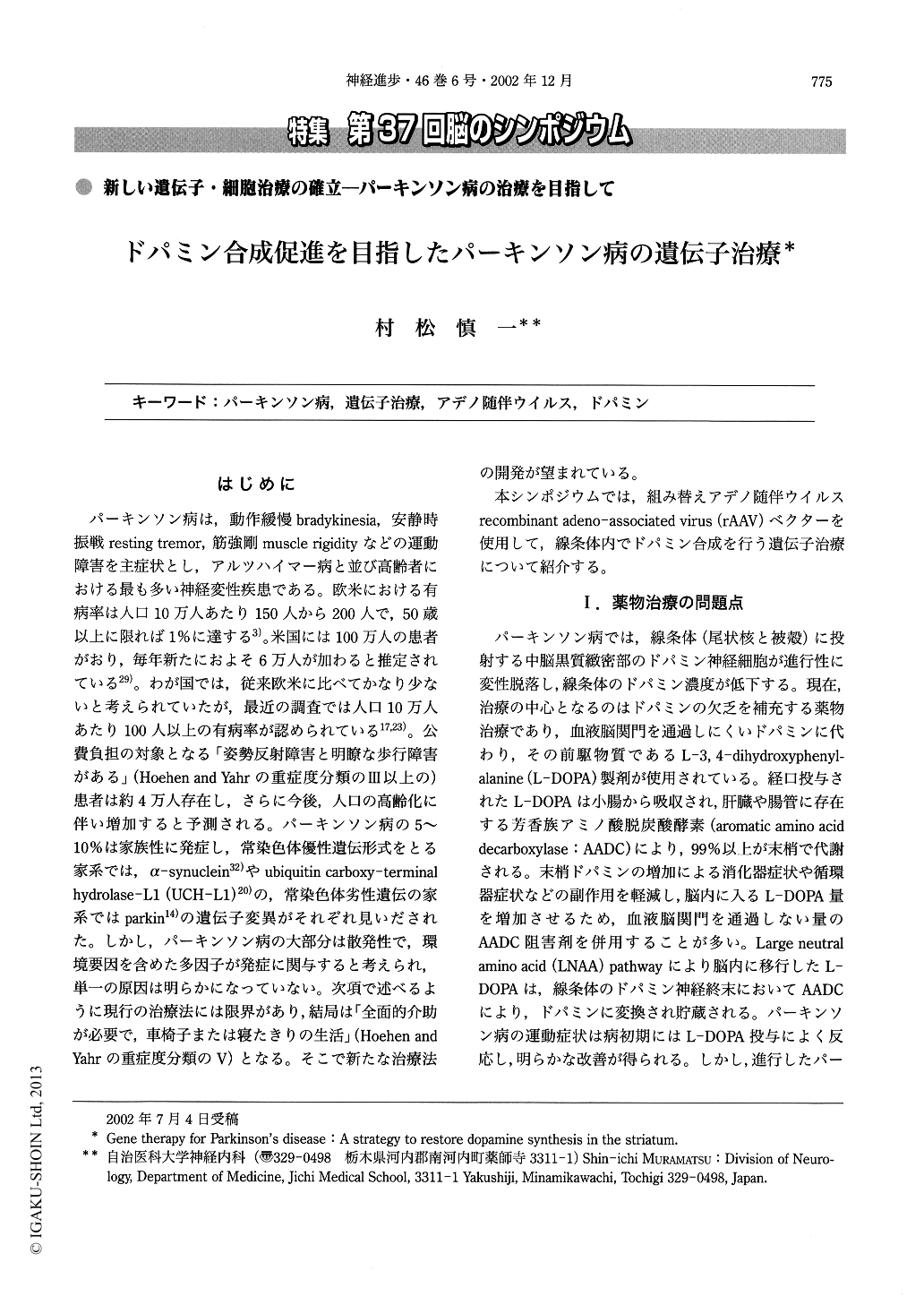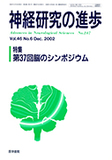Japanese
English
- 有料閲覧
- Abstract 文献概要
- 1ページ目 Look Inside
はじめに
パーキンソン病は,動作緩慢bradykinesia,安静時振戦resting tremor,筋強剛muscle rigidityなどの運動障害を主症状とし,アルツハイマー病と並び高齢者における最も多い神経変性疾患である。欧米における有病率は人口10万人あたり150人から200人で,50歳以上に限れば1%に達する3)。米国には100万人の患者がおり,毎年新たにおよそ6万人が加わると推定されている29)。わが国では,従来欧米に比べてかなり少ないと考えられていたが,最近の調査では人口10万人あたり100人以上の有病率が認められている17,23)。公費負担の対象となる「姿勢反射障害と明瞭な歩行障害がある」(Hoehen and Yahrの重症度分類のⅢ以上の)患者は約4万人存在し,さらに今後,人口の高齢化に伴い増加すると予測される。パーキンソン病の5~10%は家族性に発症し,常染色体優性遺伝形式をとる家系では,α-synuclein32)やubiquitin carboxy-terminal hydrolase-L1(UCH-L1)20)の,常染色体劣性遺伝の家系ではparkin14)の遺伝子変異がそれぞれ見いだされた。
Motor symptoms of Parkinson's disease (PD) result from severe decreases in the dopamine (DA) content of the striatum secondary to the progressive loss of nigrostriatal dopaminergic neurons. Replacement of DA in the striaturn is crucial for functional recovery, and oral administration of the DA precursor, L-3, 4-dihydroxyphenylalanine (L-DOPA), is currently used to control these symptoms. However, as the disease progresses, L-DOPA therapy eventually loses efficacy and frequent systemic administration of high dose L-DOPA causes deleterious adverse effects with oscillations in motor performance.

Copyright © 2002, Igaku-Shoin Ltd. All rights reserved.


